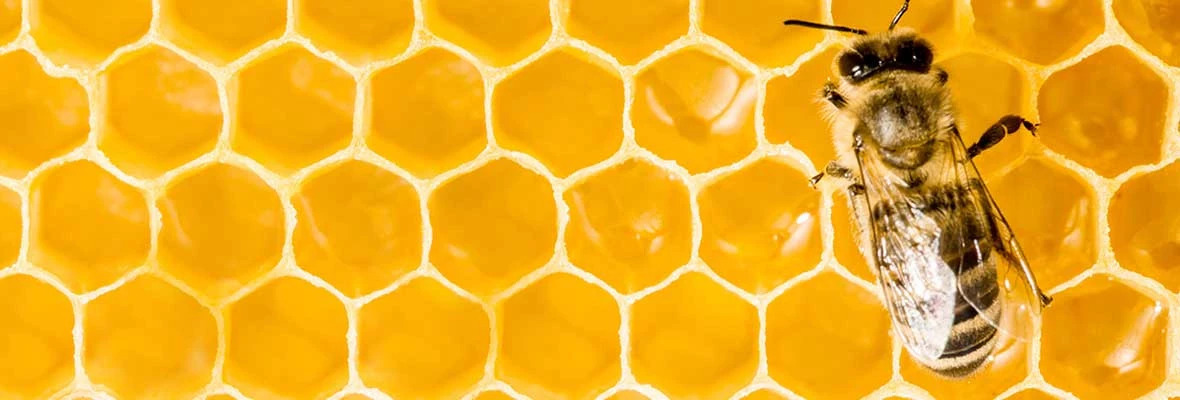Honeybees and native pollinators visit vegetable crops during flowering and pollen shed. In crops such as cucurbits, their activity is crucial to the success of the crop. In other crops such as sweet corn or potato, bees are among many beneficial insects that seek out pollen or nectar resources as a food source, but crop yield does not depend upon their activity. Populations of honeybees and native pollinators have declined worldwide in recent years. Many factors have contributed to their decline. Pesticides applied to crops is one of these factors.
Pesticides applied to protect vegetable crops can affect pollinators through multiple routes of exposure: direct contact with sprays, contact with treated surfaces, pesticide-contaminated dust or pollen particles that are collected or adhere to the body of the insect (and may be taken back to hive), and ingestion of pesticide-contaminated nectar. Decisions made by the farmer make a difference in the exposure of bees and other beneficials to toxic levels of pesticides. While pesticides applied to crops are only one among many factors that threaten pollinators, this is one factor that growers can do something about. Taking precautions to minimize pesticide poisoning of pollinators in all crops is an important responsibility of all pesticide applicators.
Steps that can reduce pesticide exposure of pollinators:
Timing: Avoid applications when crop or weeds are bloom. In crops that bloom over long periods, make applications late in the day or at night when pollinators are not foraging, and so that there is sufficient drying time before foraging begins. Control weeds.
Formulation: Wettable powders, dusts and microencapsulated products have a greater toxic hazard than emulsifiable concentrates (or other liquid formulation with active ingredient in solution). Products that do not have acute toxicity but could cause injury to immature bees if carried back to the hive should not be applied in particulate form; this includes insect growth regulators.
Drying time before exposure: Some products are highly toxic when wet, but much less so after the pesticide is dried. Spinosyns have this characteristic. Apply when there will be adequate drying time (usually 2 to 3 hours, depending on weather conditions and crop canopy) before pollinator activity.
Drift: Avoid drift on non-target areas near the field where blooming plants may be located. Windspeed and application equipment both influence drift.
Mode of application: Soil and seed applications reduce exposure compared to foliar applications, unless plant uptake of the active ingredient produces residues in pollen or nectar. In the case of neonicotinoids, there is evidence that foraging bees may receive sublethal doses in pollen and nectar when cucurbit crops were treated with a systemic at early growth stages. This effect appears to be reduced by using lower rates and applying as early as possible, but may not be entirely eliminated by these methods. A sublethal dose may make bees more vulnerable to other stressors, or may combine with doses from contact with other treated plant material.
Acute toxicity: Avoid applying insecticides rated as High or Medium directly to bees that are actively foraging on blooming crop or weeds. EPA registration includes an acute, single-dose laboratory study designed to determine the quantity of pesticide that will cause 50% mortality (LD50) in a test population of bees.
Read the label for bee hazard rating: If a pesticide is used outdoors as a foliar application, and is toxic to pollinating insects, a “Bee Hazard” warning has generally been required to be included in the Environmental Hazards section of the label. The EPA bee toxicity groupings and label statements are as follows:
- High (H) Bee acute toxicity rating: LD50 = 2 micrograms/bee or less. The label has the following statement: “This product is highly toxic to bees and other pollinating insects exposed to direct treatment or residues on blooming crops or weeds. Do not apply this product or allow it to drift to blooming crops or weeds if bees or other pollinating insects are visiting the treatment area.” If the residues phrase is not present, this indicates that the pesticide does not show extended residual toxicity.
- Moderate (M) Product contains any active ingredient(s) with acute LD50 of greater than 2 micrograms/bee but less than 11 micrograms/bee. Statement: “This product is moderately toxic to bees and other pollinating insects exposed to direct treatment or residues on blooming crops or weeds. Do not apply this product if bees or other pollinating insects are visiting the treatment area.”
- Low (L) All others. No bee or pollinating insect caution required.
In this guide, Table 28 (Information about Insecticides and Miticides) gives the bee toxicity rating (H, M or L) for each active ingredient. In the Insect Management section for each crop, the bee toxicity rating is given for each insecticide listed.
